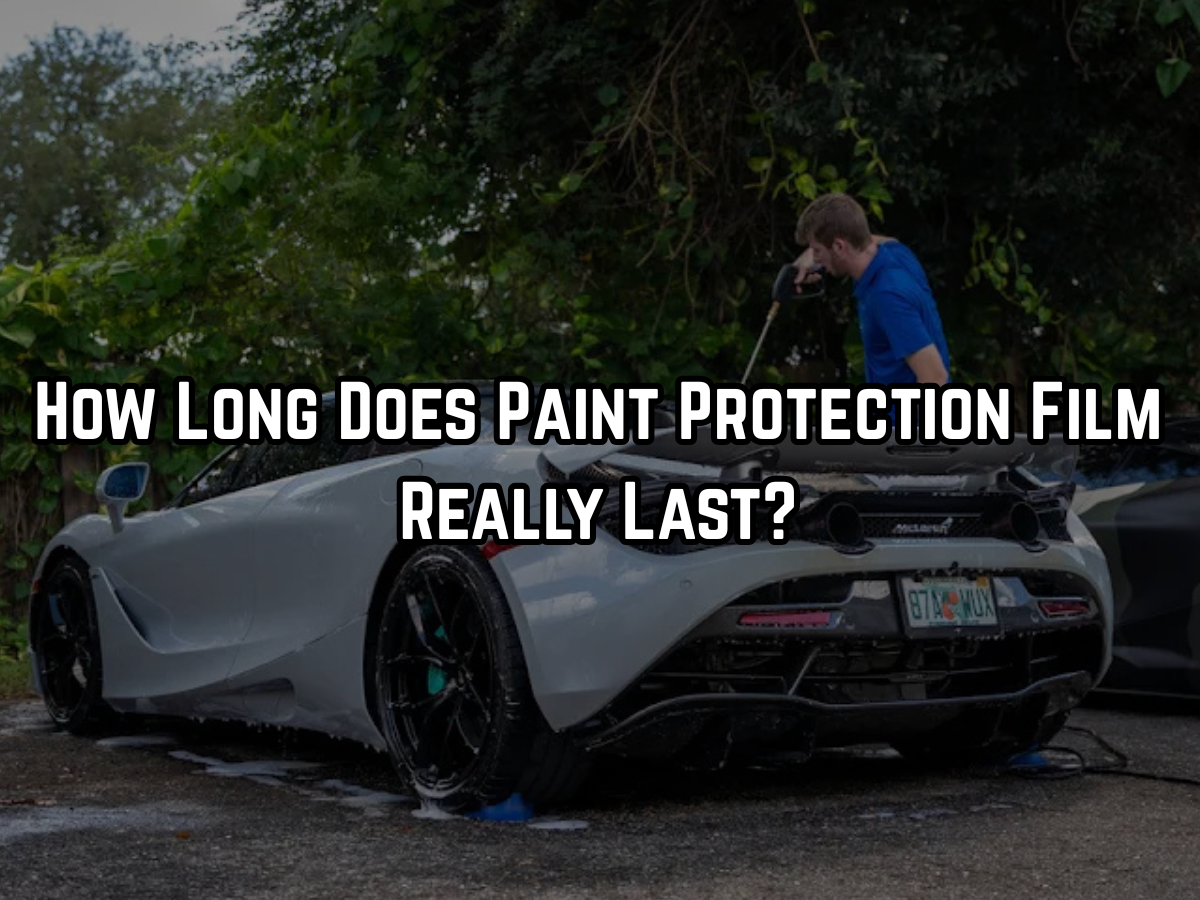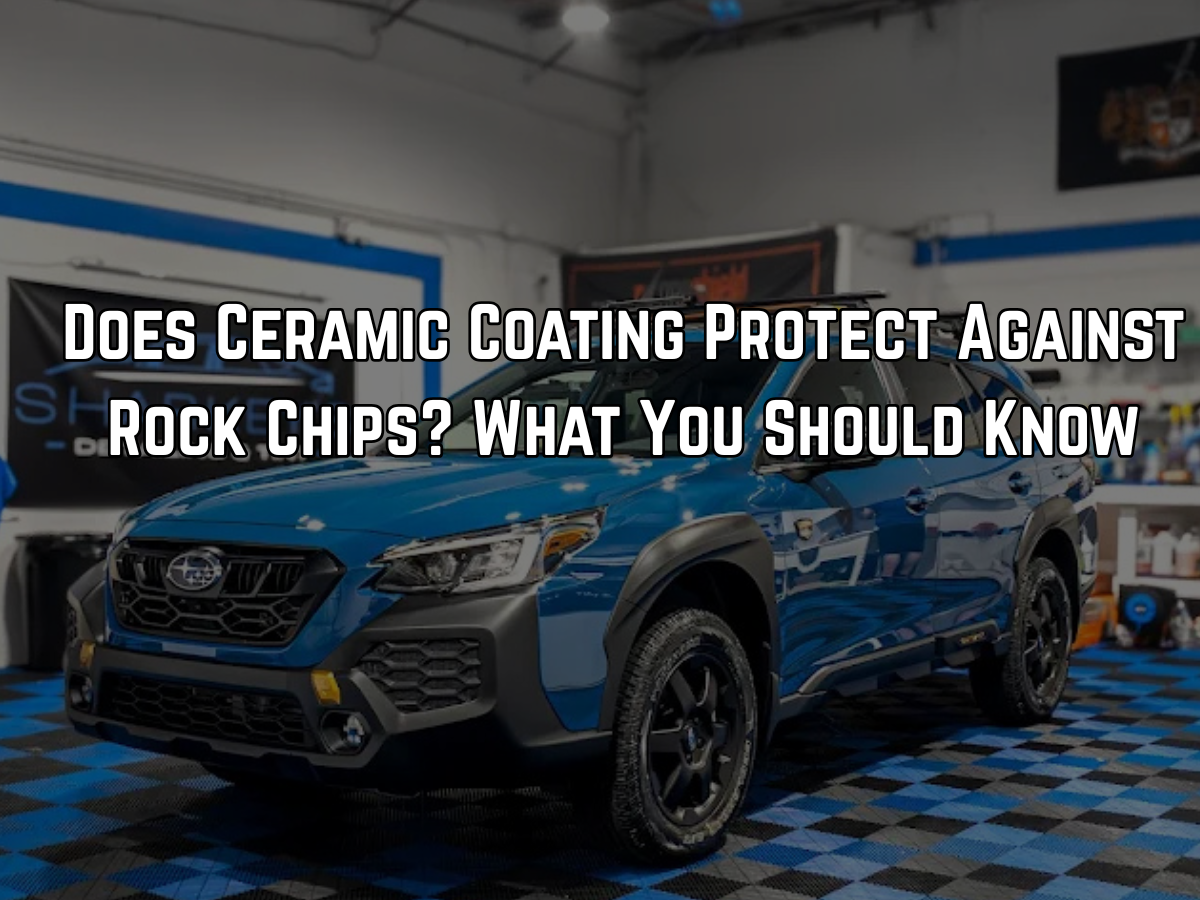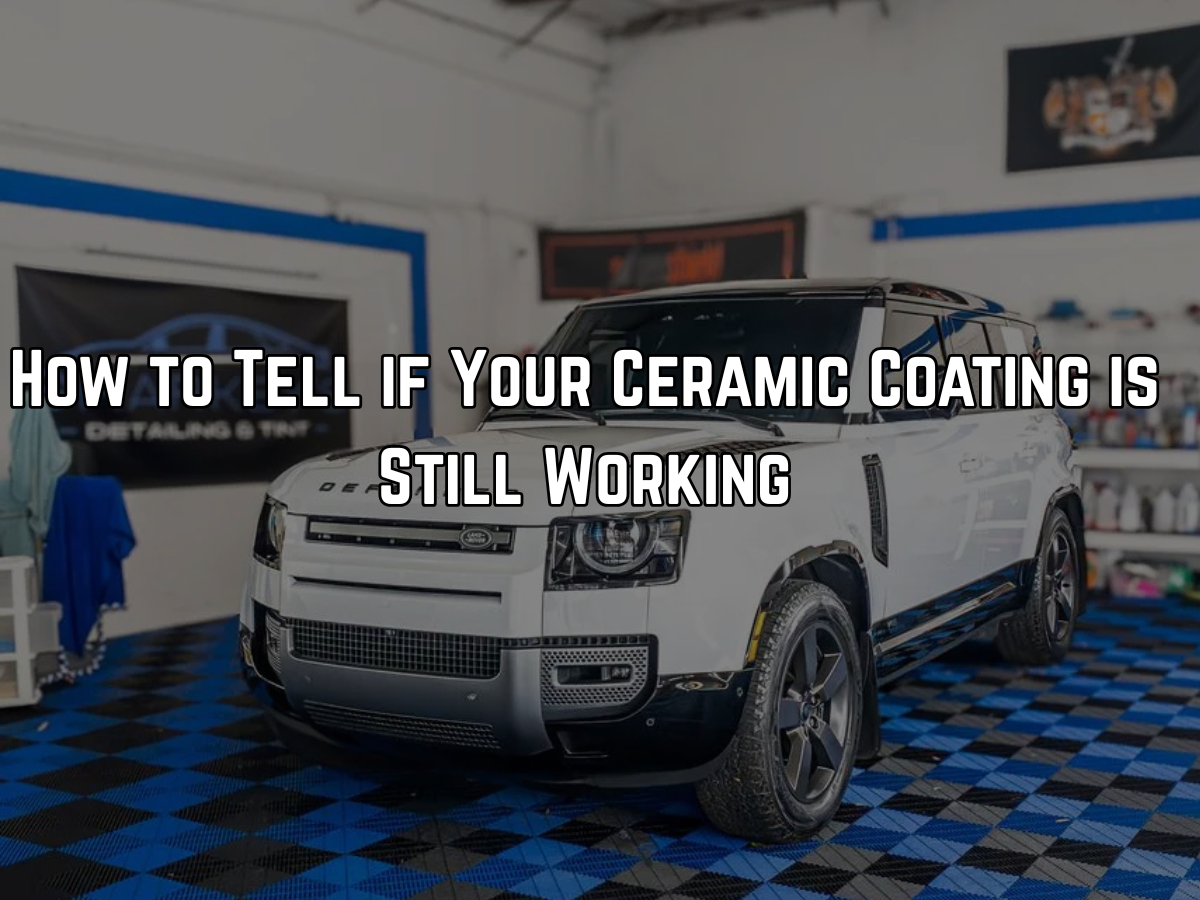How to Remove Tree Sap, Bird Droppings, and Bugs Without Damaging Your Coating
You walk out to your car and spot it immediately. A blob of bird droppings on the hood. Tree sap dripping down the windshield. Bug guts splattered across the front bumper. You paid good money for that ceramic coating, and now you're standing there wondering if you're about to scratch it all up trying to clean this mess.
Key Takeaways
- Act within 24 to 48 hours to prevent permanent etching, especially with bird droppings
- Soak first, wipe second - never scrub dry contaminants
- Use pH-neutral products designed for ceramic coatings when possible
- Microfiber towels only - paper towels and rough cloths scratch coatings
- Isopropyl alcohol (70% solution) safely removes stubborn sap and bugs without coating damage
- Warm water loosens most contaminants better than cold water alone

Why These Contaminants Are Coating Killers
Tree sap, bird droppings, and bug remains aren't just ugly. They're chemically aggressive. Bird droppings have a pH level between 3.5 and 4.5, making them acidic enough to etch through weakened ceramic coatings if left too long. Tree sap contains organic compounds that harden in UV light and bond to your coating's surface. Bug guts? They're acidic too, and they bake onto hot paint within minutes.
Your ceramic coating provides protection, but it's not invincible. These contaminants can degrade the hydrophobic layer if you either leave them too long or remove them incorrectly. The key is removing them quickly using methods that don't create more problems than you started with.
The 24 Hour Rule
Time matters more than most people realize. Fresh contaminants sit on top of your coating and wipe away easily. After 24 hours, they start bonding. After 48 hours, especially in Florida's heat and UV exposure, they can etch into the coating itself.
I've seen bird droppings left for a week that required paint correction to fix. The acid had eaten through the coating and started etching the clear coat underneath. Could have been avoided with 2 minutes of cleaning when it was fresh.
Set a habit: check your car daily if it's parked outside. A quick walk-around takes 30 seconds and lets you catch problems while they're still easy to fix.
Removing Bird Droppings Safely
Bird droppings are probably the most common coating threat, especially if you park near trees or power lines. Here's how to handle them without creating swirl marks or coating damage.
For fresh droppings (less than 24 hours old):
Grab a spray bottle with plain water or a quick detailer spray. Soak the dropping thoroughly. Let it sit for 2 to 3 minutes to soften. Fold a clean microfiber towel into quarters and gently wipe in one direction. Don't circle or scrub. One pass should lift most of it. If residue remains, spray again and wipe with a fresh section of the towel.
For dried or baked-on droppings:
This takes more patience. Soak the area with warm water and let it sit for 5 to 10 minutes. The water needs time to penetrate and soften the dropping. You can place a wet microfiber towel over the spot to keep it saturated. After soaking, gently wipe. If it's still not budging, repeat the soak. Never scrape or scrub hard.
Some people use quick detailer sprays with lubricants. That works fine. The lubricant helps the towel glide over the surface without creating friction. Just make sure the product is coating-safe and pH-neutral.
Tackling Tree Sap Step by Step
Tree sap is sticky, stubborn, and seems to multiply overnight when you park under the wrong tree. Regular car soap won't touch it. You need something that breaks down the organic resins without attacking your coating.
The isopropyl alcohol method:
Mix 70% isopropyl alcohol with 30% water in a spray bottle. Spray the sap generously and let it sit for 1 to 2 minutes. The alcohol dissolves the sap's sticky bonds. Use a microfiber towel to wipe it away gently. For thick sap deposits, you might need to repeat this process 2 or 3 times.
Why 70% instead of 90% or higher? The water content helps prevent the alcohol from evaporating too quickly, giving it more time to work. Pure alcohol evaporates almost instantly in Florida's heat.
The warm water soak alternative:
If you don't have isopropyl alcohol, warm water works for lighter sap. Soak a microfiber towel in warm (not hot) water and lay it over the sap for 5 minutes. The warmth softens the sap. Wipe gently. This method takes longer but won't harm your coating.
What about commercial sap removers?
They work, but read labels carefully. Some contain harsh solvents that can strip ceramic coatings. Look for products specifically labeled as coating-safe. When in doubt, test on a small, hidden area first.
Bug Removal Without the Scrubbing
Bug splatter happens fast, especially on Florida highways. Those protein-based insect remains bake onto your paint within an hour in summer heat. The longer they sit, the harder they bond.
Immediate removal (same day):
Spray the affected area with water or quick detailer. Let it soak for 1 minute. Wipe gently with a microfiber towel. Fresh bugs come off easily if you don't let them dry completely.
Dried bug removal:
Here's where people make mistakes. They see dried bugs and start scrubbing. Bad idea. Soak first, always. Use warm water or a dedicated bug remover spray. Let it dwell for 3 to 5 minutes. The goal is rehydrating the bug proteins so they release from the coating.
After soaking, use a soft microfiber towel with light pressure. If bugs remain, spray again and wait longer. Some bugs, particularly love bugs common in Florida, contain acidic compounds that bond aggressively. These might need 2 or 3 soak-and-wipe cycles.
The front bumper problem:
Your front bumper, hood, and mirrors catch the most bugs. These areas need extra attention during every wash. Consider using a dedicated bug sponge or bug-specific wash mitt. These have slightly more texture than standard wash mitts but are still safe for coatings when used with proper lubrication.
Products That Won't Damage Your Coating
Not all cleaning products work well with ceramic coatings. Some strip the hydrophobic layer or dull the gloss. Here's what's safe:
- pH-neutral car shampoo diluted properly works for light contamination. It won't remove heavy sap or dried bugs, but it's your daily maintenance product.
- Isopropyl alcohol (70% solution) handles sap and light tar without coating damage. Don't use it as a daily cleaner, but for spot removal, it's excellent.
- Coating-safe quick detailers provide lubrication for safe wiping and often contain light cleaning agents. These work great for bird droppings and fresh bugs.
- Dedicated bug and tar removers marked as coating-safe do the job without solvent damage. These are worth having in your detailing kit.
- Distilled water is underrated. For many contaminants, pure water with sufficient soak time does most of the work. It won't strip your coating or leave residue.
What You Should Never Use
Some products and methods cause more harm than the contaminants themselves.
- All-purpose cleaners not designed for automotive use often have high pH levels that degrade ceramic coatings. Kitchen degreasers, glass cleaners with ammonia, and household surface cleaners don't belong on your car.
- Abrasive pads or brushes scratch coatings. Even soft brushes create micro-marring over time. Stick with microfiber towels exclusively.
- Gasoline or paint thinner will remove sap, sure, but they'll also strip your coating right off. These solvents are too aggressive for any paint protection.
- Pressure washers at close range can lift ceramic coatings if used incorrectly. Maintain at least 12 inches of distance and use a wide spray pattern, not a focused jet.
- Your fingernails for scraping. I know it's tempting, but fingernails create gouges in coatings and clear coat. Always use proper tools.
The Right Tools for the Job
Having the right supplies on hand makes contamination removal quick and safe. Keep these items in your garage or trunk:
- A few microfiber towels in different conditions. Fresh, clean towels for final wiping. Older towels for initial contamination removal. Never use the same towel on wheels and paint.
- A spray bottle with 70% isopropyl alcohol solution for sap removal. Mix it fresh every few months as the solution can evaporate over time even in a sealed bottle.
- Coating-safe quick detailer spray for lubrication during wiping. This prevents dry wiping, which creates swirl marks.
- Dedicated bug remover if you drive highways frequently. Having this ready means you can handle bug splatter the same day instead of letting it bake on.
- A small bucket for warm water when you need to soak larger areas or multiple contaminants.
Temperature and Timing Considerations
Florida's heat changes how contaminants behave and how you should remove them.
Morning removal is easier. Contaminants are cooler and haven't had a full day of UV exposure to harden them. If you spot bird droppings in the evening, consider waiting until morning when the paint is cool rather than trying to clean hot paint in direct sun.
Avoid cleaning in direct sunlight when possible. Cleaning products and water evaporate too quickly, leaving spots and reducing effectiveness. Work in shade or during cooler parts of the day.
Warm products work better in winter (though Florida winters are mild). In summer, room temperature products are fine. Never use hot water directly on paint as thermal shock can cause problems.
When Contamination Damages the Coating
Sometimes you do everything right, but the contaminant was left too long or was particularly aggressive. Signs of coating damage from contamination include:
- Dull spots where gloss is reduced in the affected area. The coating's polymer structure has been compromised.
- Rough texture remaining after removal. The contaminant has etched into the coating.
- Loss of water beading in specific spots while surrounding areas still bead normally. The hydrophobic layer is gone in those areas.
- Visible etching or staining that won't clean away. The acid has penetrated through the coating into the clear coat.
If you see these signs, professional paint correction might be necessary to restore the affected area. Sometimes the damage requires coating reapplication on that panel.
Prevention Strategies That Actually Work
Removing contaminants is reactive. Prevention is better. Here's what actually helps:
Park strategically when possible. Avoid parking directly under trees known for heavy sap production. Pine trees, maple trees, and certain palm species are the worst offenders.
Use a car cover if parking outside for extended periods. This isn't practical for daily drivers, but for occasional-use vehicles, covers prevent most contamination.
Wash regularly every 2 weeks. Regular washing removes contaminants before they have time to bond or cause damage. This is your best prevention strategy.
Apply coating maintenance sprays every 4 to 6 weeks. These refresh the hydrophobic layer and make contamination removal even easier during your next wash.
Check your car daily if parked outside. A 30 second walk-around lets you catch bird droppings, sap drips, or bug splatter while they're still fresh and easy to remove.
Florida-Specific Challenges
Living in Sarasota means dealing with contamination issues other regions don't face as severely.
Love bug season hits twice a year, typically in May and September. These bugs swarm in massive numbers and their acidic bodies etch paint quickly. During love bug season, check your front bumper daily and clean bugs off within 24 hours.
Salt air near the coast makes all contaminants more aggressive. The salt accelerates the acidic effects of bird droppings and speeds up how fast bugs bond to your paint. If you're within 5 miles of the coast, be extra vigilant.
Year-round UV intensity hardens contaminants faster. Tree sap that might take 3 days to fully harden in northern states can harden in less than 24 hours here. UV light polymerizes the sap, making it tougher to remove.
Frequent afternoon rain is actually helpful. It rinses some contaminants away naturally. But it also means water spotting if you have hard water, which creates its own problems. Consider using a water spot remover as part of your routine maintenance.
Dealing With Multiple Contaminants at Once
Sometimes you're not dealing with one isolated problem. You've got bird droppings, sap, and bugs all at the same time. Here's the order to tackle them:
- Bird droppings first. They're the most acidic and time-sensitive. Remove these before anything else using the soak and wipe method.
- Tree sap second. Use your isopropyl alcohol solution or warm water soak. Sap takes the longest to soften, so start this process while you're handling other areas.
- Bugs last. They're typically the least damaging if left a bit longer while you handle the other two. Plus, if you're going to do a full wash after spot cleaning, the bugs will get a good soak during the wash process.
Work panel by panel rather than jumping around the car. Finish one contaminated panel completely before moving to the next. This prevents cross-contamination and ensures you don't miss spots.
After Removal: Inspection and Touch-Up
Once you've removed all visible contaminants, inspect your work. Look at the treated areas from different angles in good light. Run your hand over them. The surface should feel just as smooth as the surrounding paint.
If you feel any roughness or see any residue, repeat the cleaning process. Sometimes what looks clean visually still has microscopic contamination left behind.
After cleaning, consider applying a coating booster spray to the treated areas. This refreshes the hydrophobic properties and ensures the coating maintains consistent performance across the entire panel.
When to Get Professional Help
Some contamination situations are beyond DIY removal. If you're dealing with heavy sap covering large areas, months-old dried bird droppings that have etched the coating, or severe bug accumulation that's baked on through multiple heat cycles, professional detailing services can handle it safely.
Professionals have access to stronger products and techniques like steam cleaning and clay bar treatment that remove stubborn contamination without coating damage. They can also assess whether your coating needs maintenance or reapplication after contamination damage.
The Bottom Line on Coating-Safe Removal
Removing tree sap, bird droppings, and bugs from your ceramic coating comes down to three principles: act quickly, soak thoroughly, and wipe gently. Most coating damage happens from aggressive scrubbing or using the wrong products, not from the contaminants themselves.
Keep the right supplies on hand, check your car regularly, and handle contamination as soon as you spot it. Your coating will maintain its protective properties and appearance for years. Wait too long or use harsh methods, and you're looking at coating damage that requires professional intervention.
For more information on maintaining your coating's performance, check out these resources on ceramic coating maintenance and proper care techniques.




